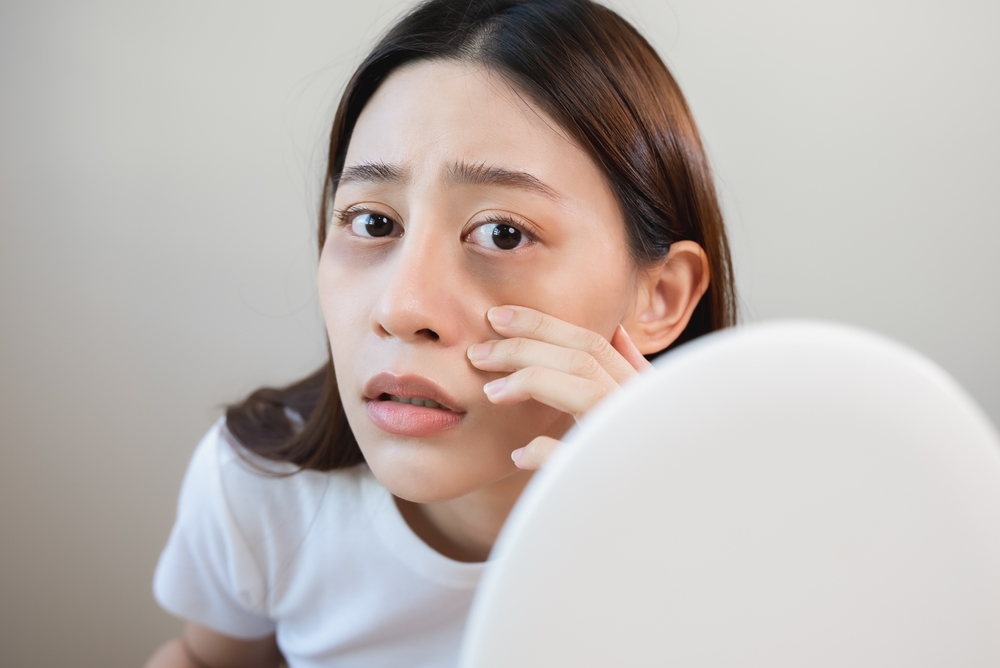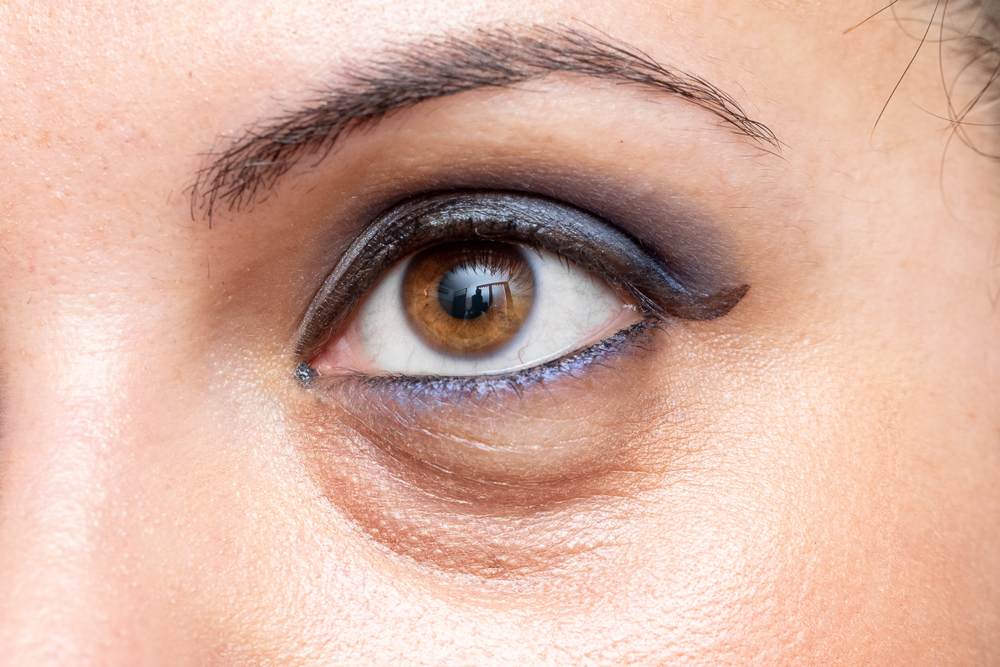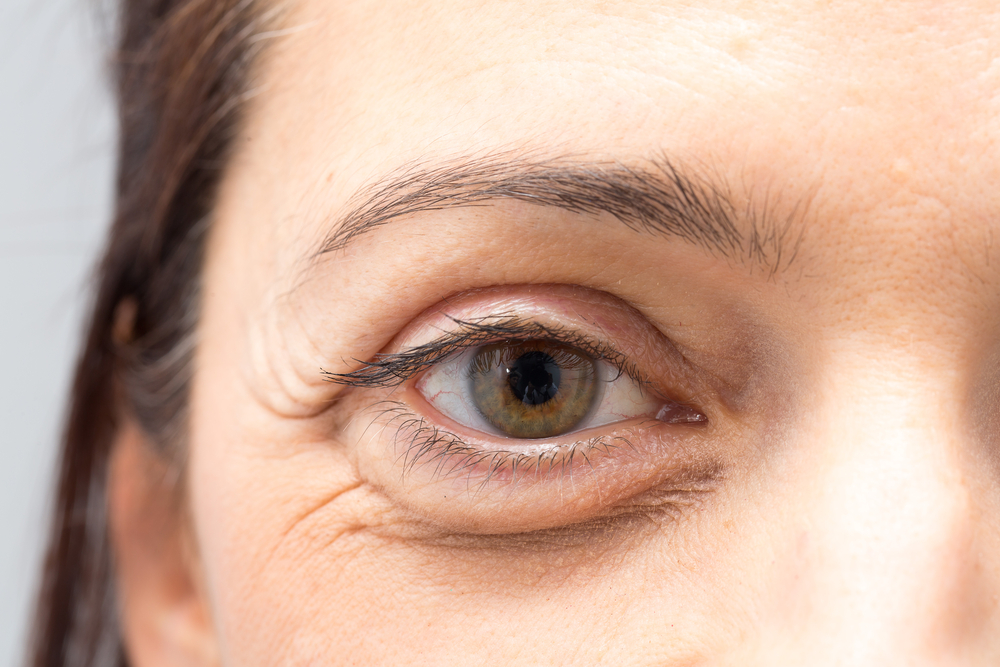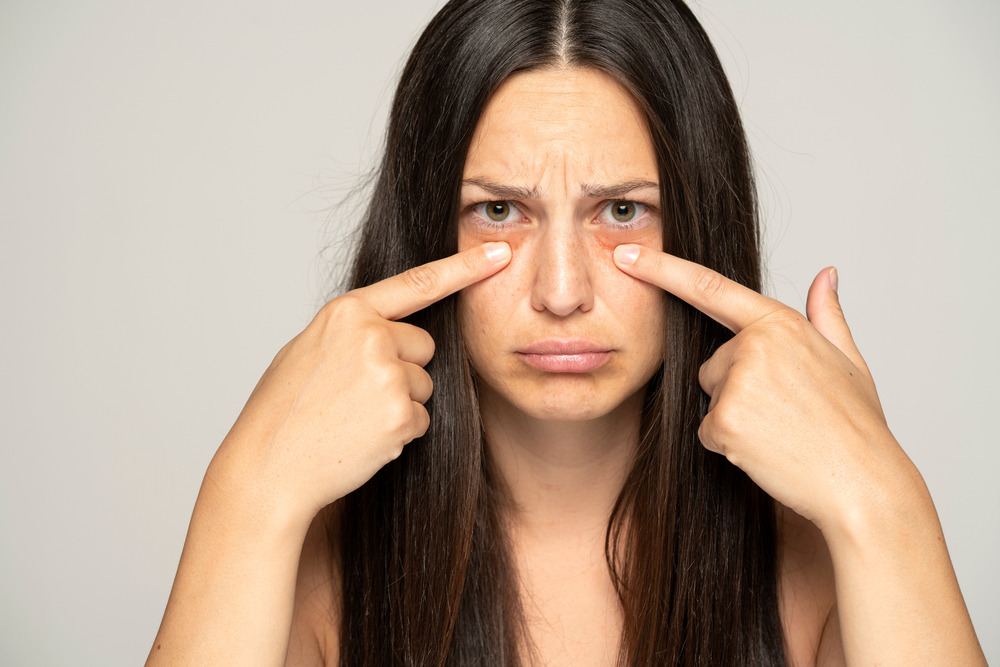We’ve all stared in the mirror, scrutinizing those pesky under-eye circles and bags, wishing they’d just disappear. But beyond the aesthetic frustration, these issues can sometimes be a sign of deeper, more serious health concerns.
While most under-eye problems are simply a result of sleep deprivation, aging, or allergies, persistent or worsening discoloration or puffiness can be a warning signal from your body. Let’s delve into the world of under-eye issues and uncover the potential causes, from the harmless to the more serious.
The Thin Skin and Blood Vessel Connection

The delicate skin under your eyes, known as the periorbital area, is incredibly thin. This thinness allows the blood vessels underneath to show through more prominently, giving the appearance of blue or violet discoloration. As we age, collagen and elasticity in the skin naturally decrease, making these blood vessels even more visible. While it might seem alarming, this blue-ish tint is purely aesthetic and shouldn’t cause any concern.
Hyperpigmentation: More Than Just a Cosmetic Issue

Hyperpigmentation, the darkening of the skin, can occur both spontaneously and over time, and it has a variety of causes. Here are some of the most common culprits:
- Sun exposure: Ultraviolet rays from the sun can trigger hyperpigmentation, leading to darker under-eye circles.
- Genetic pigmentation: Some people are genetically predisposed to hyperpigmentation, making them more susceptible to dark circles.
- Allergic dermatitis: Allergic reactions to certain products or substances can cause inflammation and hyperpigmentation around the eyes.
- Edema/swelling: Fluid buildup under the eyes can also contribute to hyperpigmentation.
- Hormones: Hormonal fluctuations, particularly during pregnancy or menopause, can trigger hyperpigmentation.
- Aging: As we age, our skin’s ability to regenerate slows down, making it more prone to hyperpigmentation.
Hyperpigmentation can be triggered by oxidized blood leaking from blood vessels around the eyes, often accompanied by swelling (edema). Thankfully, this condition is generally harmless and can often be managed through lifestyle changes and dietary adjustments.
Under-Eye Bags: A Tale of Gravity and Aging

Swelling under the eyes, commonly known as bags, is a familiar sight across all age groups. In younger individuals, these bags are often a temporary side effect of allergies, illnesses, or fluid buildup. However, as we age, gravity takes its toll on the delicate collagen tissue under our eyes. The skin’s elasticity weakens, causing it to sag and accumulate fat tissue, resulting in those prominent bags.
While we often blame lack of sleep for under-eye bags, there’s no concrete scientific evidence to support this direct link. While sleep deprivation can worsen puffiness, especially in the morning, it’s not the sole cause.
When Under-Eye Issues Signal Deeper Health Concerns

While under-eye issues are primarily aesthetic, they can also be a warning sign of underlying health problems. If discoloration or puffiness persists or worsens over time, it’s crucial to consult a doctor to rule out any serious conditions. Here are some potential culprits:
Poor Circulation

As mentioned earlier, under-eye discoloration and bags can be caused by poor circulation. To test if this is the case, gently press on the skin under your eyes. If the area lightens momentarily and then slowly darkens again, it’s likely related to circulation issues.
Food Intolerances

According to the Mayo Clinic, certain food intolerances or allergies can trigger dark under-eye circles. The culprit could be anything from dairy products to preservatives. If you’ve been struggling with persistent under-eye discoloration, consider exploring potential food sensitivities.
Iron Deficiency (Anemia)

While dark circles alone don’t necessarily indicate iron deficiency, if you’re experiencing other symptoms like fatigue, frequent colds, and dizziness, it’s important to get your iron levels checked. Iron deficiency, also known as anemia, can lead to under-eye discoloration due to a lack of blood flow, as your body struggles to carry oxygen to your cells.
In addition to the above, other health conditions can contribute to under-eye circles and bags:
- Dehydration: Lack of fluids can lead to fluid buildup and puffiness under the eyes.
- Kidney disease: Kidney problems can cause fluid retention, leading to swelling in various parts of the body, including the under-eye area.
- Thyroid disorders: Hypothyroidism, a condition where the thyroid gland doesn’t produce enough hormones, can cause fluid retention and under-eye bags.
- Allergies: Seasonal allergies or allergies to certain products can trigger inflammation and swelling around the eyes.
- Sinus infections: Sinus infections can cause pressure and swelling in the face, including the under-eye area.
While it’s crucial to address any underlying health concerns, there are also natural remedies that can help reduce the appearance of under-eye circles and bags:
- Cold compresses: Apply a cold compress or ice pack to the under-eye area for 10-15 minutes to reduce swelling.
- Cucumber slices: Place chilled cucumber slices on your eyes for 15-20 minutes to soothe and reduce puffiness.
- Tea bags: Soak two tea bags in cold water, then apply them to your eyes for 10-15 minutes. The caffeine in tea can help constrict blood vessels and reduce puffiness.
- Hydration: Drink plenty of water to stay hydrated and reduce fluid buildup.
- Sleep: Aim for 7-8 hours of sleep each night to help your body repair and rejuvenate.
- Healthy diet: Eat a balanced diet rich in fruits, vegetables, and whole grains to support overall health and reduce inflammation.
Under-eye circles and bags can be a source of frustration, but it’s important to remember that they’re not always a sign of serious health issues. While most cases are due to lifestyle factors like sleep deprivation or aging, persistent or worsening under-eye problems should prompt a visit to your doctor to rule out any underlying conditions. By understanding the potential causes and taking proactive steps to address them, you can work towards a more confident and healthy appearance.


